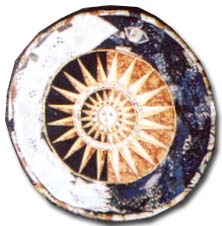amber

One of the more exciting things in the spider conference was the paleontology section (no groaning). Apparently, no other conference ever covered fossil spiders before, mostly because fossil spiders are so darn hard to find. And that's because spiders have a soft body and get completely pulverised in the normal fossilization process. However, the few fossils found have been of spiders that got trapped in resin of trees and then as the resin hardens over millions of years it becomes amber. I have always liked amber and it was a fascinating series of discussions on spiders in amber. Samuel Zschokke of Switzerland had a very interesting talk about spider webs that had been embedded in amber. Coincidentally enough, St. Petersburg is also well known for amber. One of the palaces built by Catherine the great had a room called the Amber room which had walls inlaid with surprise, surprise, Amber. I couldn't visit it but I was told that it was "incredibly gaudy". The palace itself was destroyed and then recreated, like so many of the buildings in the city. Anyway, after the conference, I went souvenier hunting and was immediately struck by the vast quantities of amber jewellery that could be bought at all kinds of shops, ranging from rings to necklaces- you name it. Some of them were obvious fakes: like the piece that had a seahorse and a one that had a starfish in it (can't imagine these clambering up pine trees). So I asked one of the guys how to differentiate between real and fake amber and he said that the best non destructive method is to immerse the piece in a solution of salt water. If its real, it floats. I did look at the jewellery more closely after that and found a couple of pieces with spiders in them and was so tempted to buy them, but then one can never be sure of not ending up with a piece of plastic with a squashed spider.
For a good list of amber related internet links, click here.




<< Home